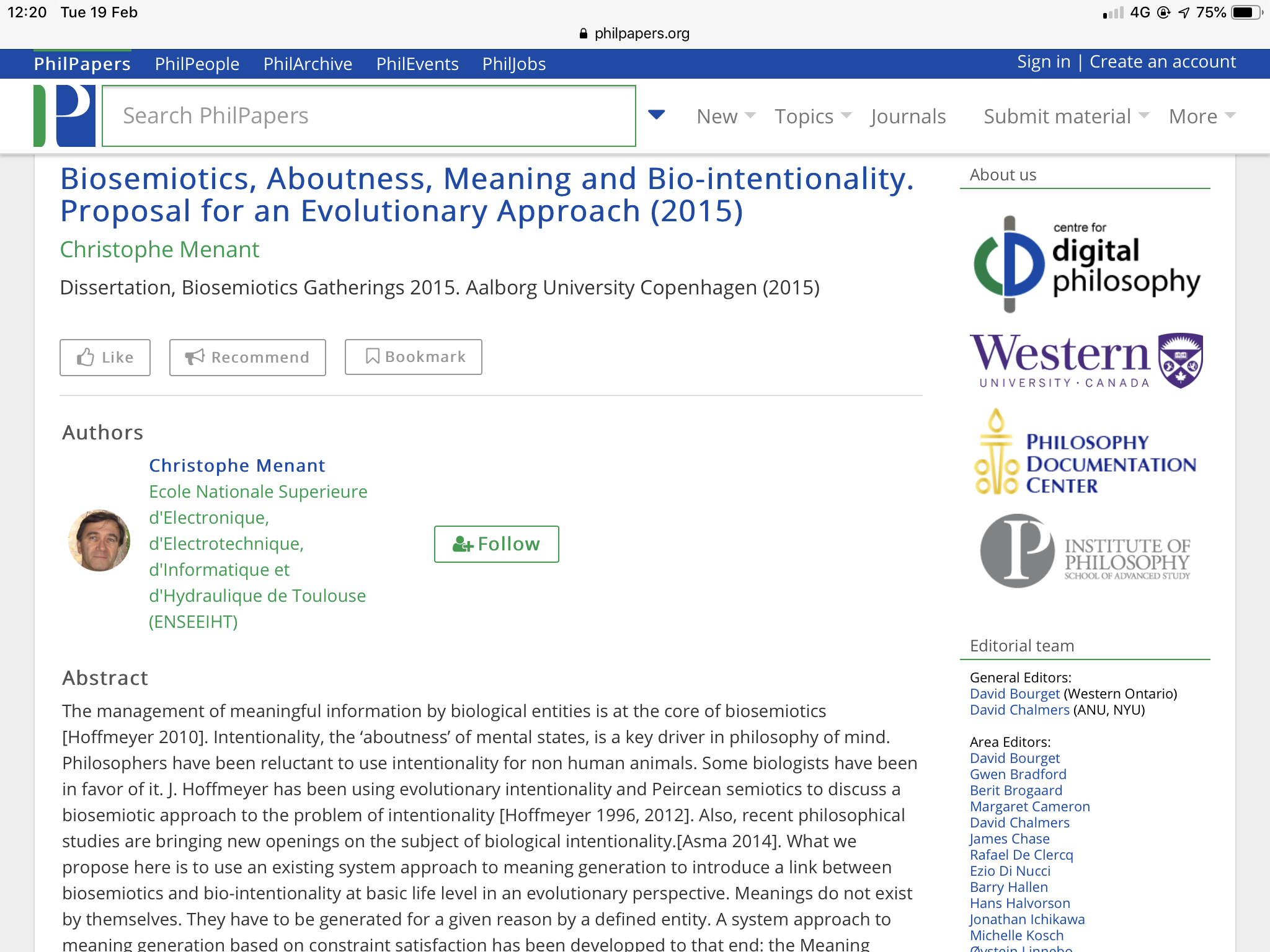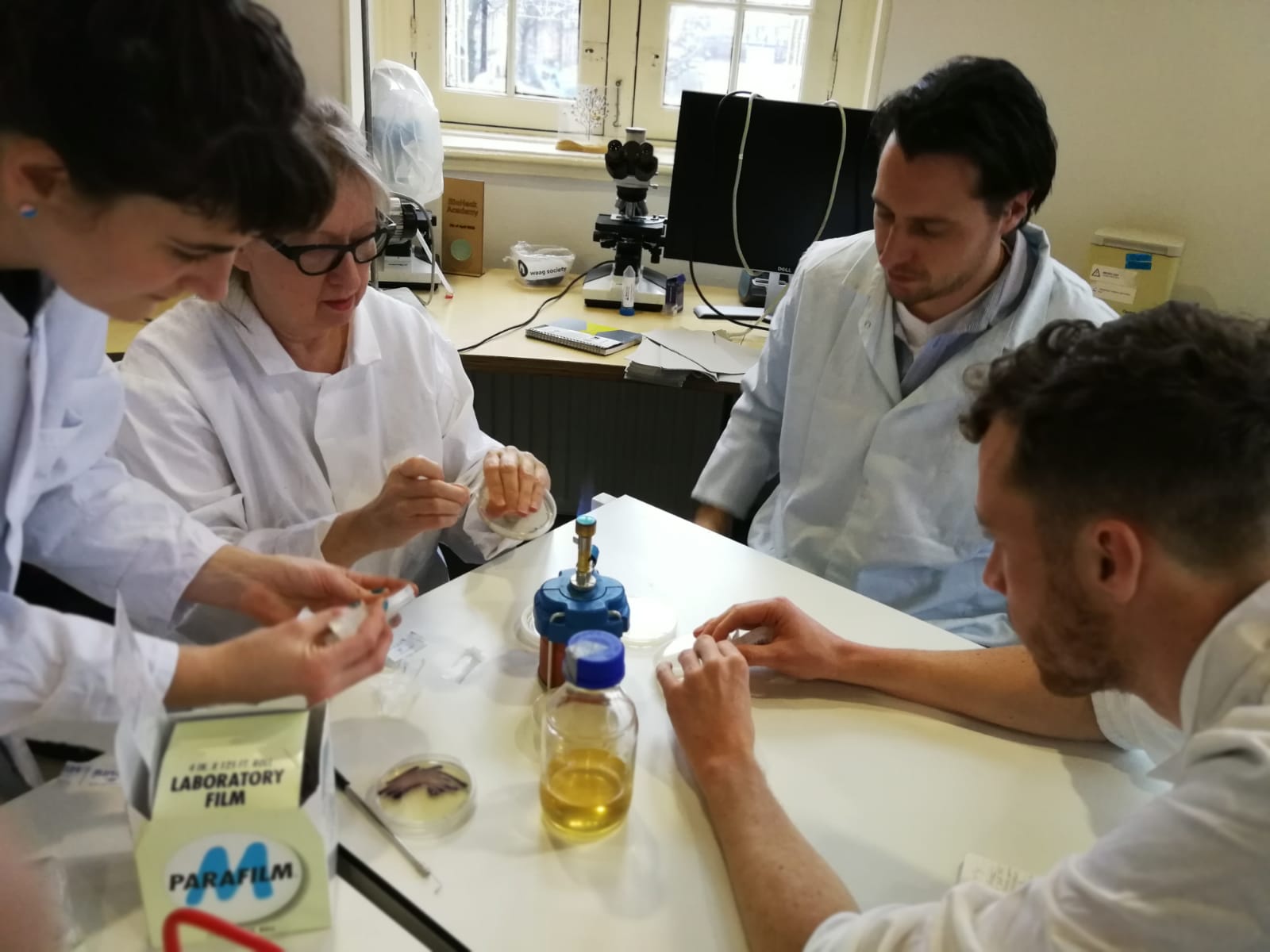Biohack Academy 2019
Week 10+
I came in 10 weeks ago knowing next to nothing about bacteria, moulds, genes, doing experiments in a biolab and so on. 10 weeks later I feel confident to call myself a biohacker. As far as BHA6 is concerned: that’s all folks! But I surely will continue to biohack and report on my findings. Thanks, Candyce, Peter and Mischa and last but not least: Roland! I had a great time!
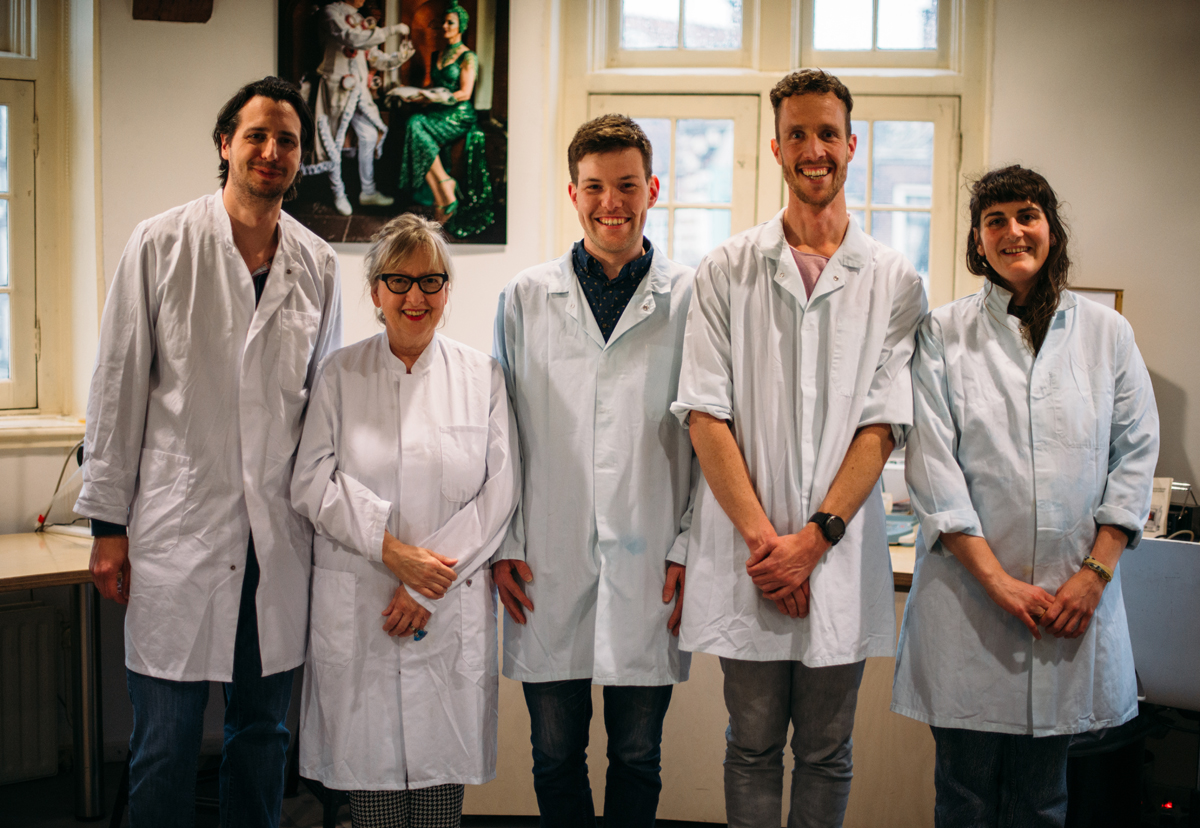
Week 10
This week we finished our Final Projects and prepared for the online presentation to our co-students and an exhibition at Waag for other people interested in what we did during the past 10 weeks as newbe biohackers.
I documented my Final Project here.
The online presentations of the projects were recorded and can be watched on the Vimeo channel, my presentation starting just after 01:24:00.
Pictures of the exhibition can be viewed here.
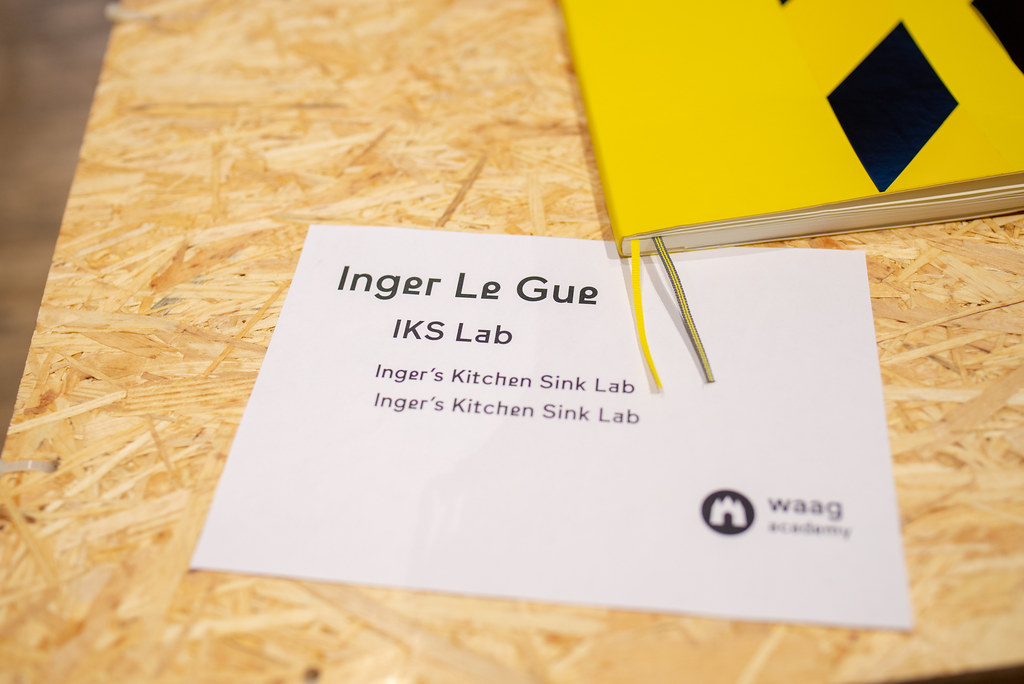
Week 6 to Week 9 (still to be done)
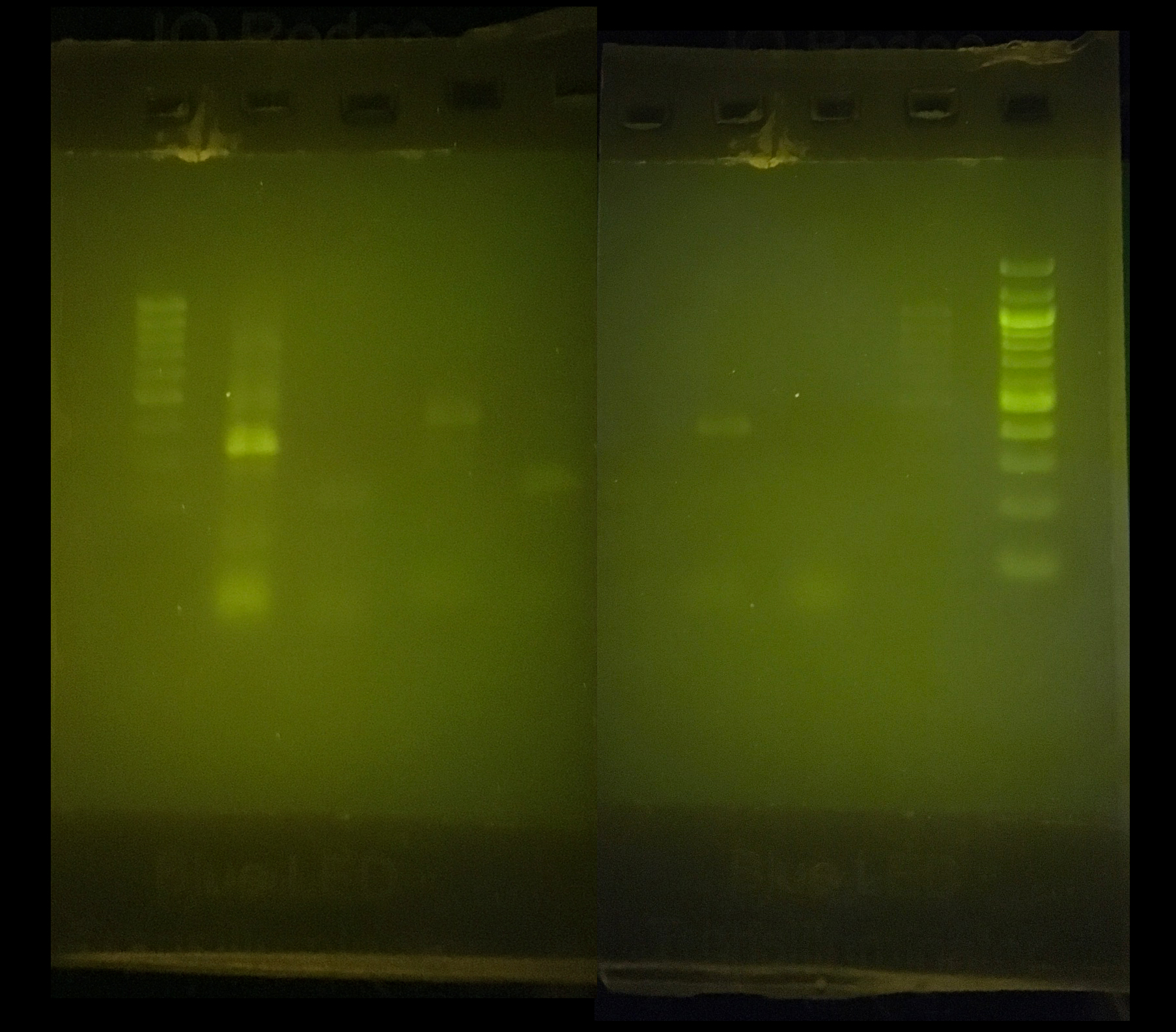
The result of a lot of steps: DNA visible!
Week 4
This week was about optics. We learned how to use a microscope and how to stain tissues (here: slices of carrots and onions) to make the cell structure visible under a microscope and how to fixate these (using clear nail polish) to preserve the slides.
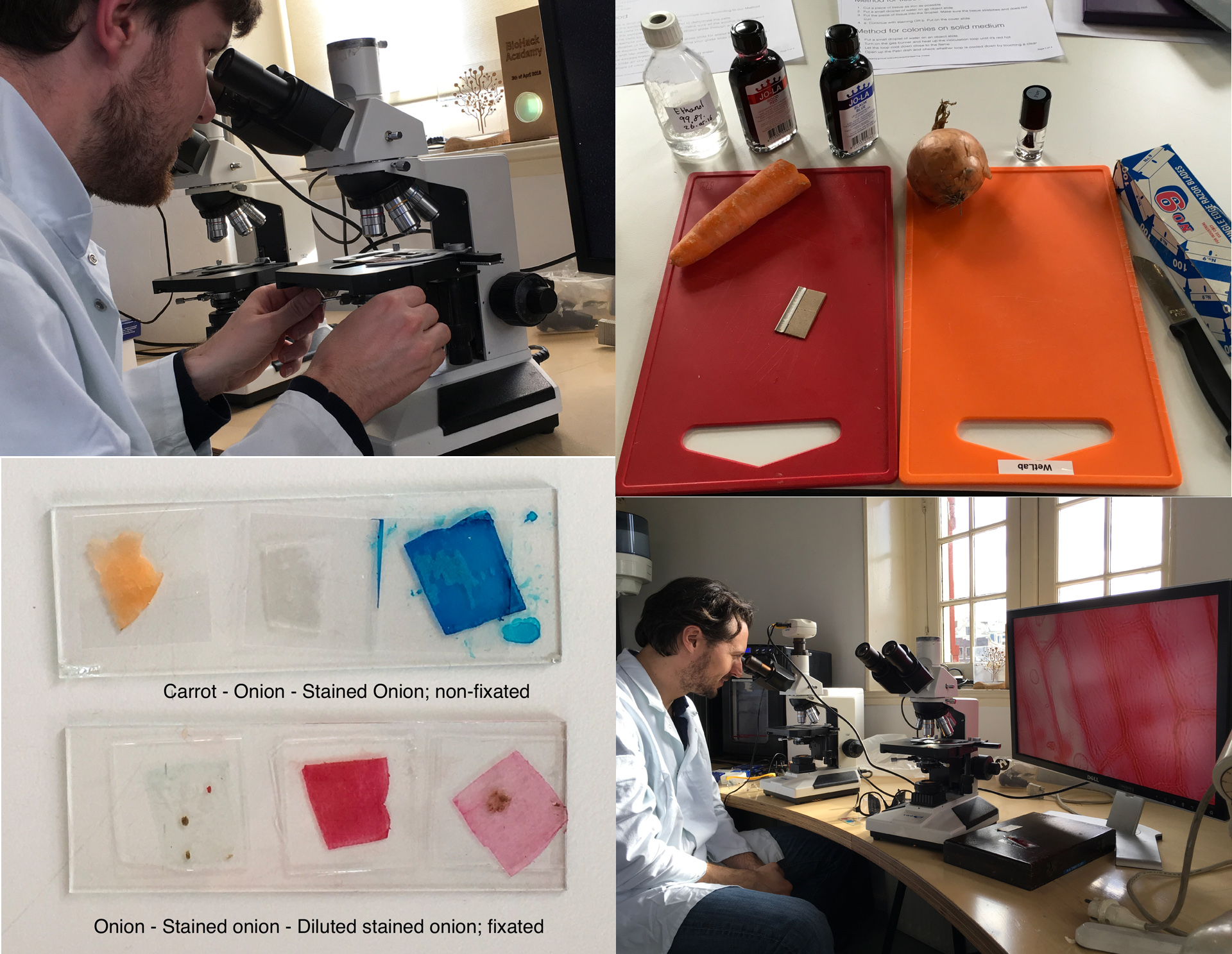
As a follow-up on last week’s practical assignment (where we isolated the Lactobacillus casei bacteria from plain yoghurt and from the probiotic drink Yakult), I took all agar plates out of the incubator to see what happened in a week’s time.
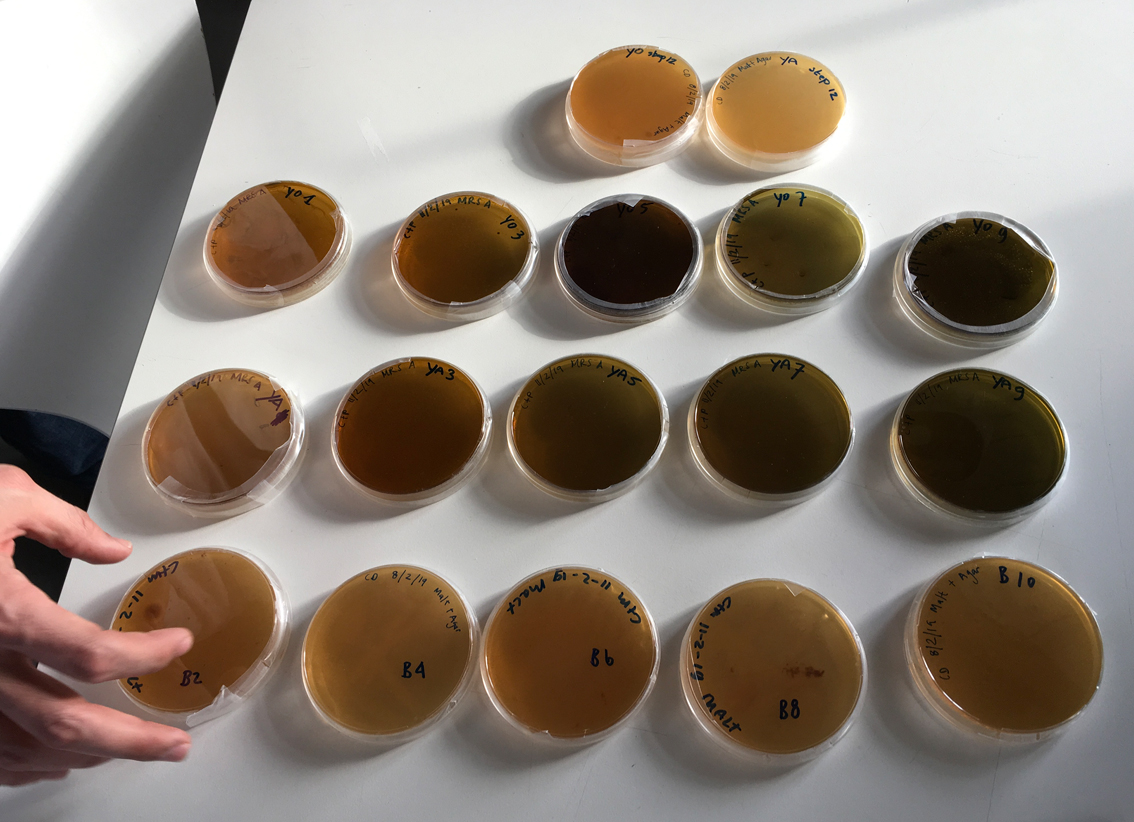
A way to compare bacterial growth is to count the number of colonies in comparable plates. In the -1 and -3 plates there were far too many colonies to do this.
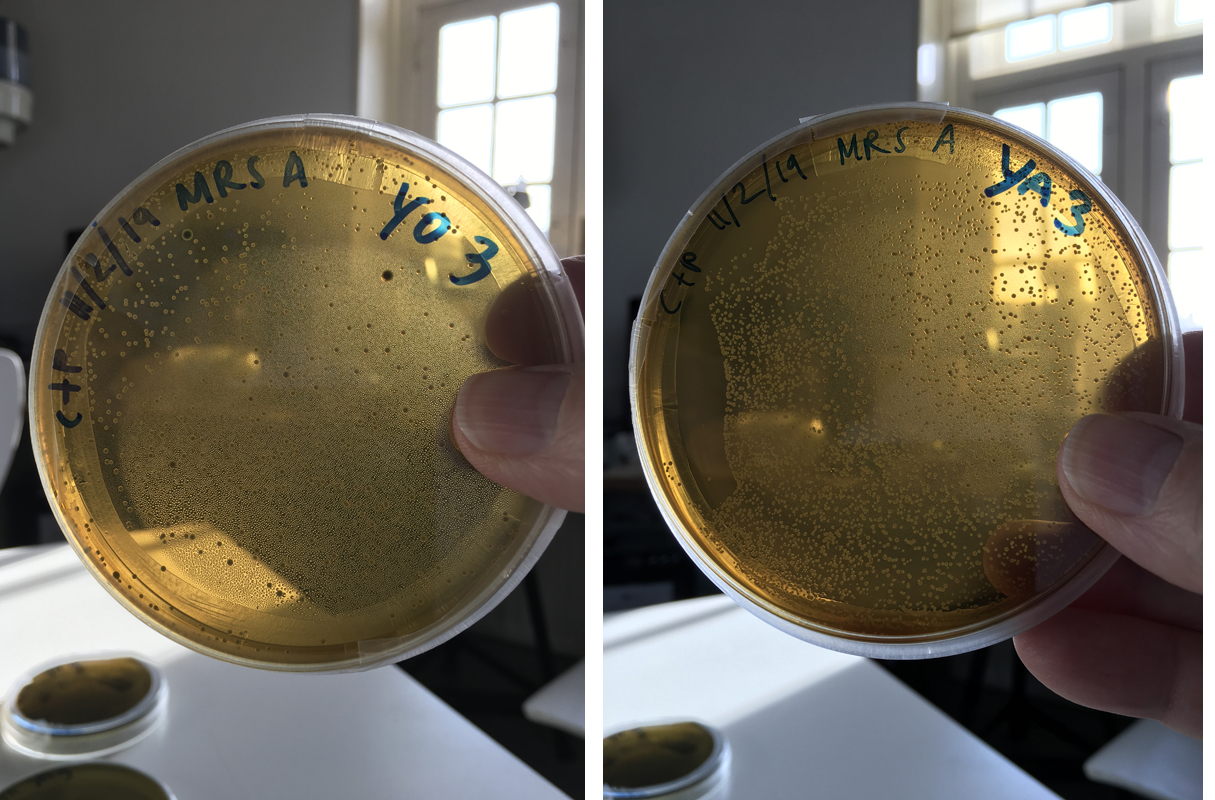
The bacterial growth in the -5 agar plates were easiest to compare because they allowed for counting separate colonies with the naked eye. In the -5 yoghurt plate I counted 14 colonies; in the -5 Yakult plate I counted 73 colonies, hence approximately a 1:5 ratio, semi-scientifically proofing the Yakult claim to be half true. (“Half true” calculation: the Yakult claim is “at least 6.5 billion bacteria per bottle” of 65ml. Estimates for yoghurt being between 1 to 10 million bacteria per ml, which equals between 6.5 and 650 millions per 65 ml, the Yakult claims boils down to 10x more bacteria. The 5x more bacteria that I counted is only half of that.)
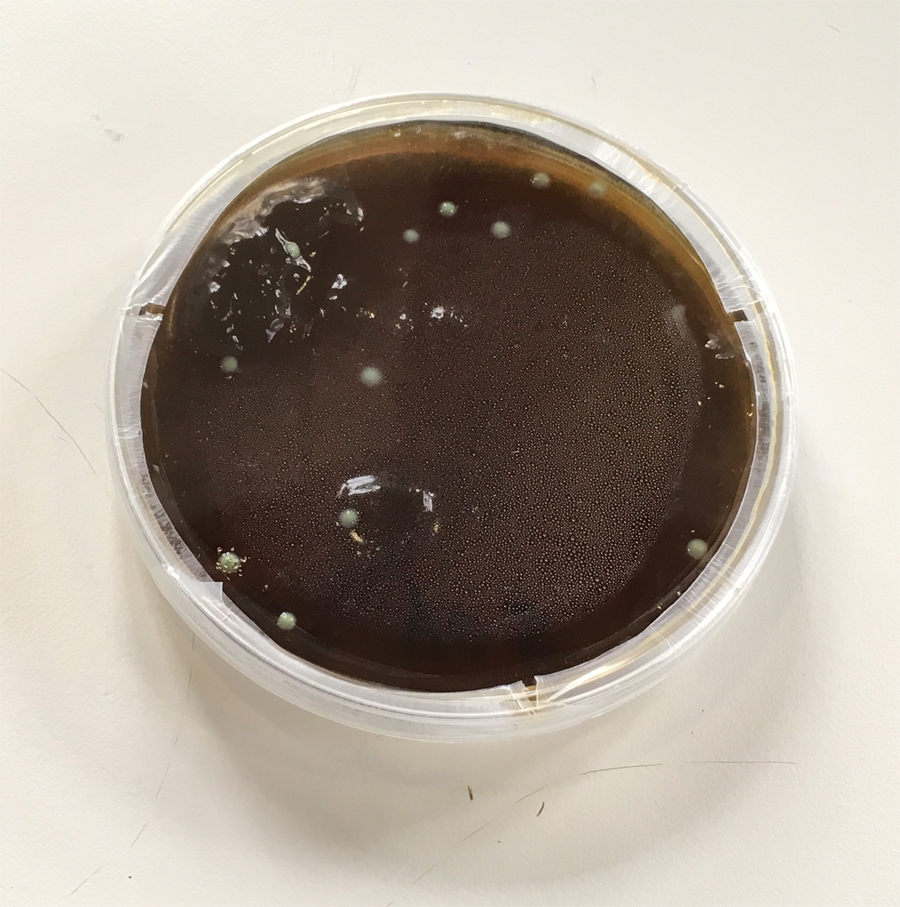
Because for my final project I was contemplating the idea of making a game for slime mould and my co-student Mischa was thinking about doing something with slime mould too, we decided to do some tests to see how slime mould grows (direction & speed, the placement of food being the variable condition). For this we prepared 6 agar plates, inoculated these with slime mould and made 6 different oat patterns (= food) in the dishes.
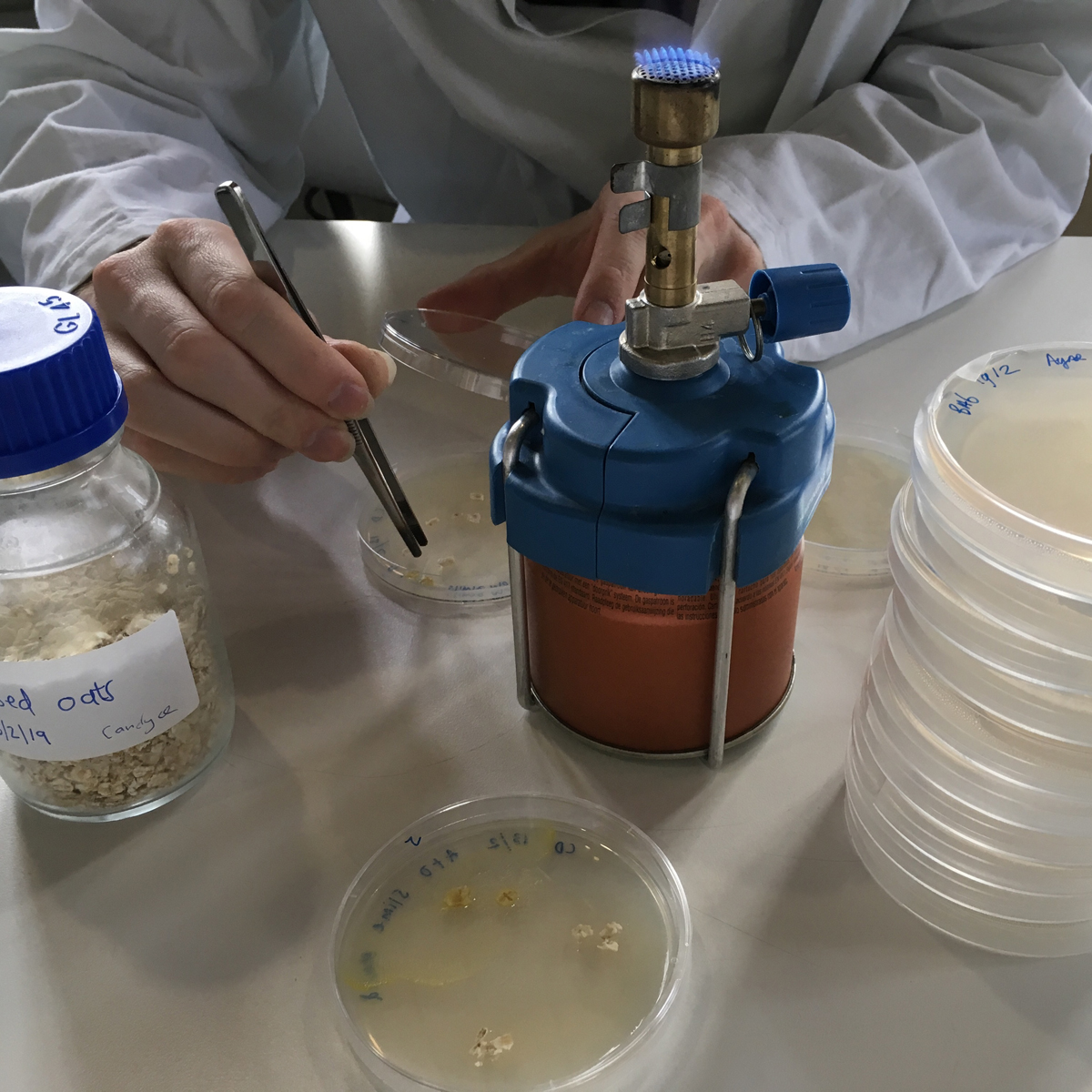
One day later when I came back in the lab the slime mould in the bottom right dish already reached halfway the diameter. A day later it travelled all the way to the other side. I intend to show the growth next week too and where possible draw conclusions.

This week’s device assignment was to build a webcam microscope. I finished mine at home and looking at a slide I already prepared in the lab, was really surprised to see the quality of the image.

With regards to the lecture on Biotic Games, showcasing amongst others Euglena Spaceships 2016 (Roland van Dierendonck, Christian Schulz, Pieter van Boheemen, Ingmar Riedel-Kruse ) and Raphael Kim’s Mould Rush, once again I stumbled upon the question how to think about the Euglena and slime mould “involved” in this human-microorganism interaction.
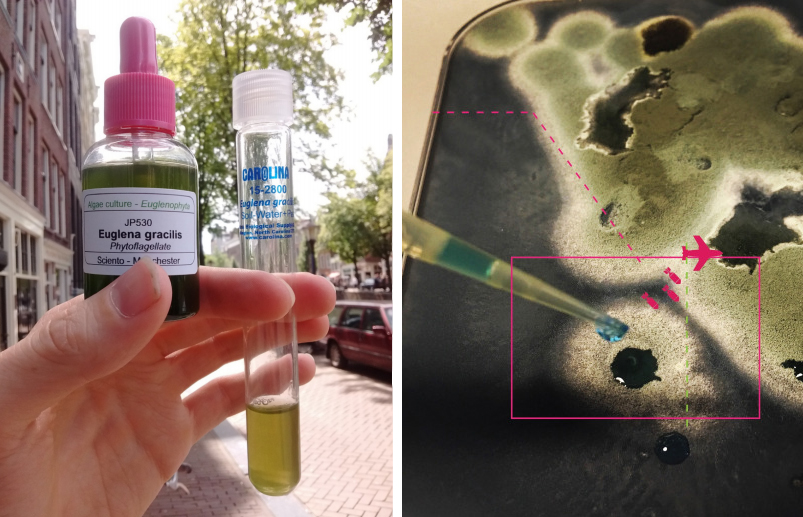
Is there any intentionality from the other side? Are humans and the microorganisms playing a game together or are the creatures just exploited as animated set pieces in a game? In my search for answers I stumbled upon Christophe Menant’s publication Biosemiotics, Aboutness, Meaning and Bio-intentionality, Proposal for an Evolutionary Approach. It feels like at least I have a starting point now for further idea development!
This week’s guest lecturer was Gunter Seyfried. I really like his work, in particular his current Return to Dilmun project, “co-starring” our own instructor Roland and our own Waag wetlab.

(Little did I know that later, unintentionally, I would hear what “Return to Dilmun” is about far more often than I wished for, me myself ending this by improvising an autocue set-up for Gunter and Roland, consisting of finger swiping pieces of text on an iPad, handheld under a camera. My autocue past and my biohack future: bien étonnés de ce trouver ensemble!)
And then there is this: a personal story (1).
##

When Lucas Evers in his Week 3’s lecture about Bio Art talked about Marion Laval-Lantet’s 2011 “May the horse live within me” art performance, it enraged me. Later I realized this could well be because of some unanswered questions still haunting me somewhere in the background since the early 90’s.
In 1992 my brother John, suffering from aplastic anaemia as a therapy first got blood cells from pigs and horses and later a bone mare transplant of an anonymous East-German donor. My brother died from graft-versus-host disease, basically his own organs one by one being rejected by the graft. I was very confused at that time and was left with very basic questions about identity. Was my brother a chimera when he got the pig and horse cells? Later, was my brother killed by the allogeneic bone mare or was the remaining entity not my brother anymore? Are we basically our immune system?
As a personal side path I will document about these and other Biohack related questions in “And then there is this” blog posts. For one of the question I meanwhile found this answer: yes, my brother was a chimera!
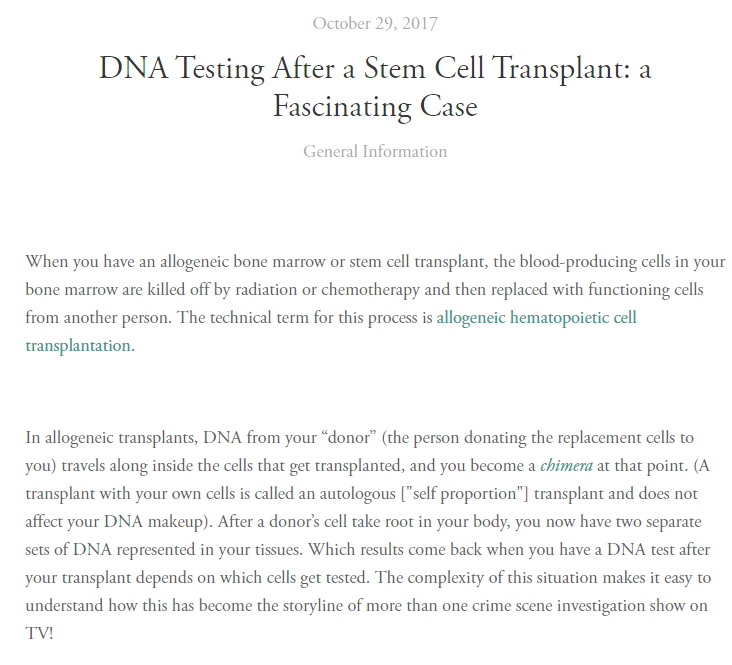
Week 3
This week we got a short introduction to molecular biology and a crash-course Arduino programming and digital electronics. In the lab we started isolating microbes ourselves.
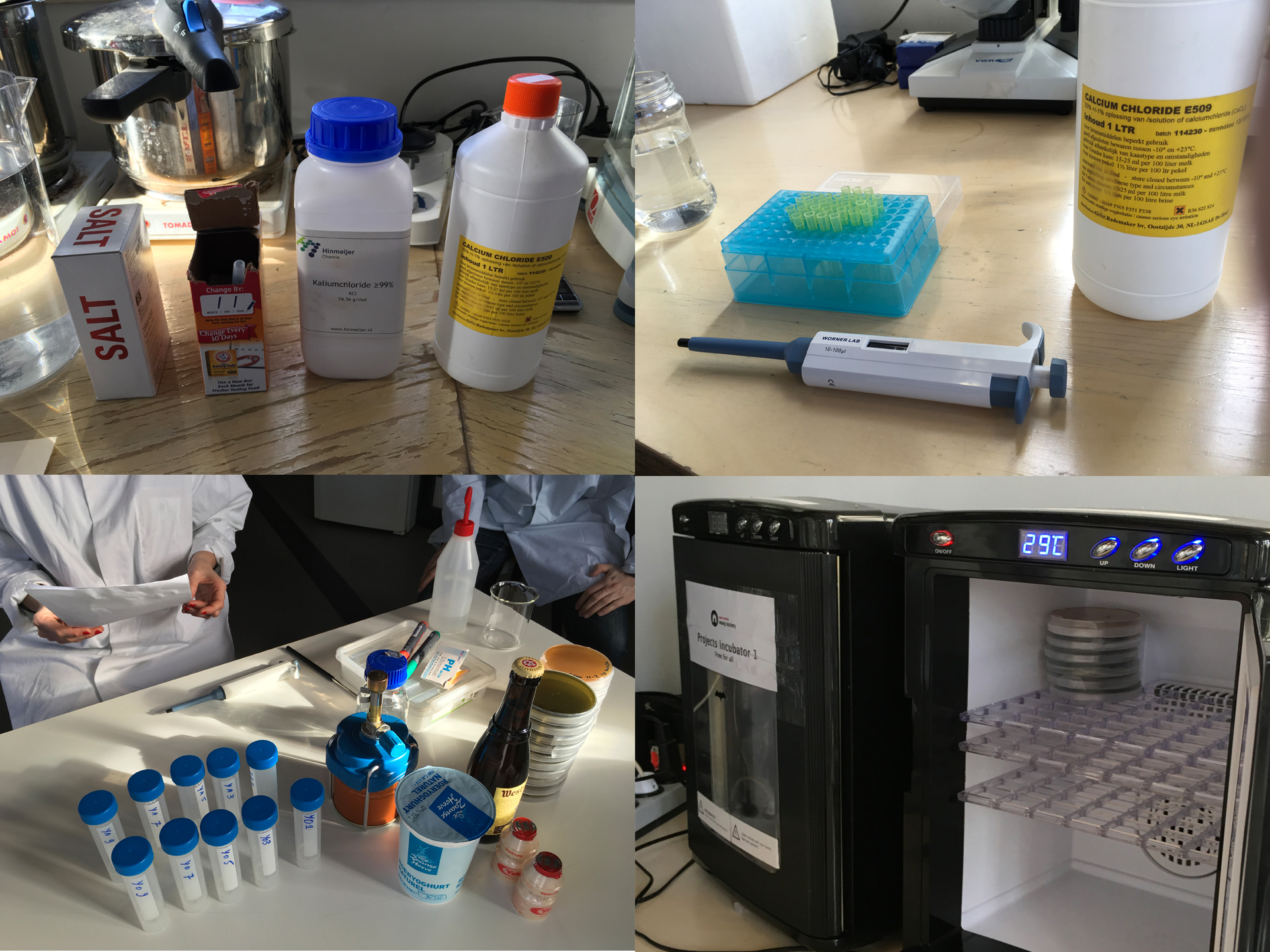
We learned how to make Ringer’s solution (a liquid simulating the isotonic solution in bodily fluids) and MRS Agar plates (a petri dish filled with agar and nutrients that - once it is solidified - can be used to culture microorganisms).
The agar plates were used for the isolation of yoghurt bacteria as found in plain yoghurt and Yakult.
We also got a lecture by Lucas Evers about Bio Art. Intrigued by the distinction we (= humans) make between inanimate material - plants – bacteria – vertibrates – other human beings, the work of Spela Petric resonated most with my current questions.
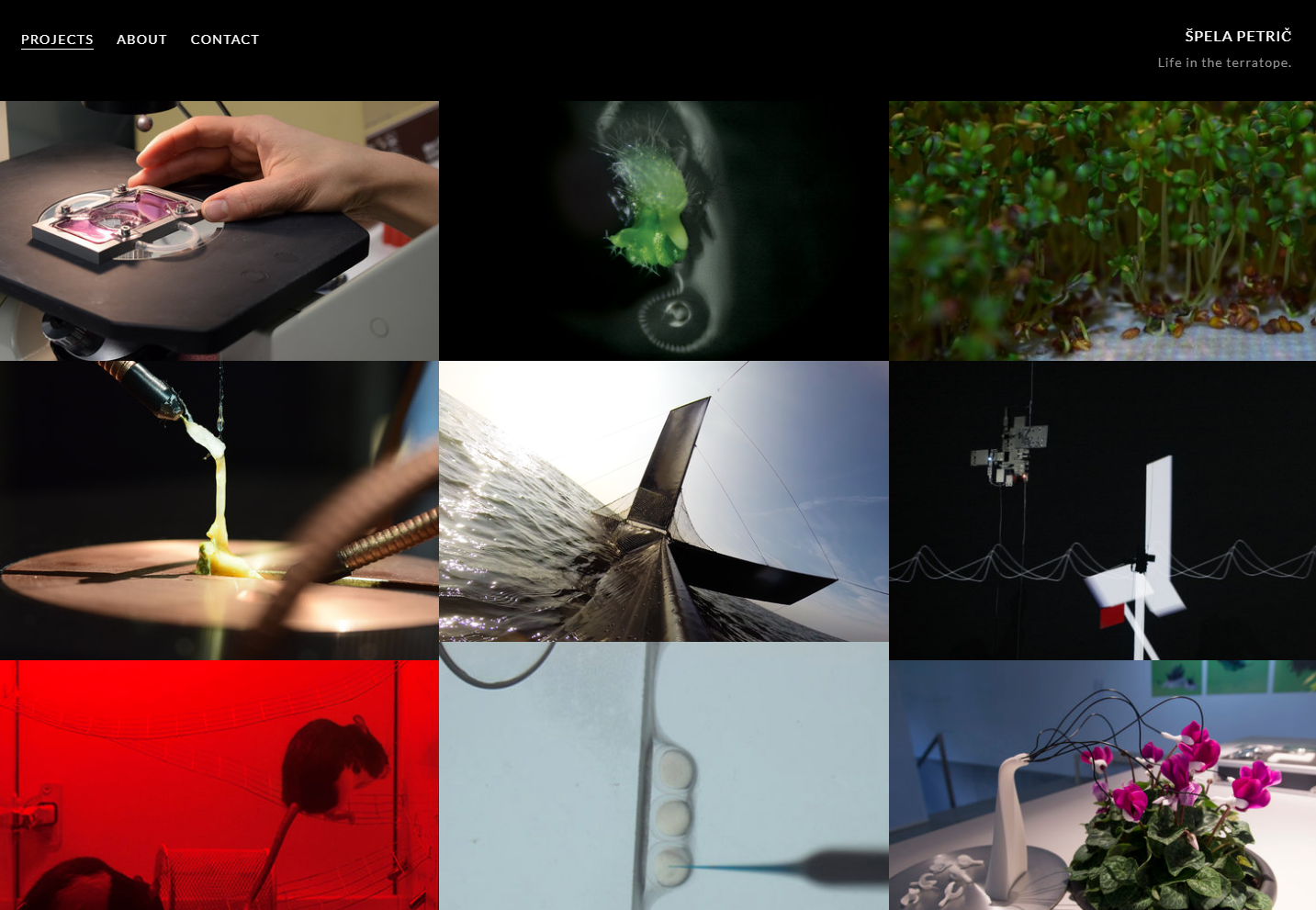
To find out more about this and hopefully get some answers to my questions, I decided to attend the V2 Meetup Introduction to Bio Art, where both Lucas and Spela would be speakers.
This week’s device to be built was the incubator. Important part of an incubator: temperature sensing and adjusting temperature accordingly.
 I breadboarded the electronics and after some initial problems all seemed to work fine. Together with Candyce the wooden enclosure was lasercut and put together. Next step to do: convert breadboarded version into soldered one and mount everything in the enclosure.
I breadboarded the electronics and after some initial problems all seemed to work fine. Together with Candyce the wooden enclosure was lasercut and put together. Next step to do: convert breadboarded version into soldered one and mount everything in the enclosure.
Thinking about a possible Final Project (designing a game for a micro-organism seemed a logical next step after having designed games for humans and for machines) I started reading about/ watching videos about programmable plants, computers made from plants, the rights of microbes, using micro-organisms in games and other related subjects.
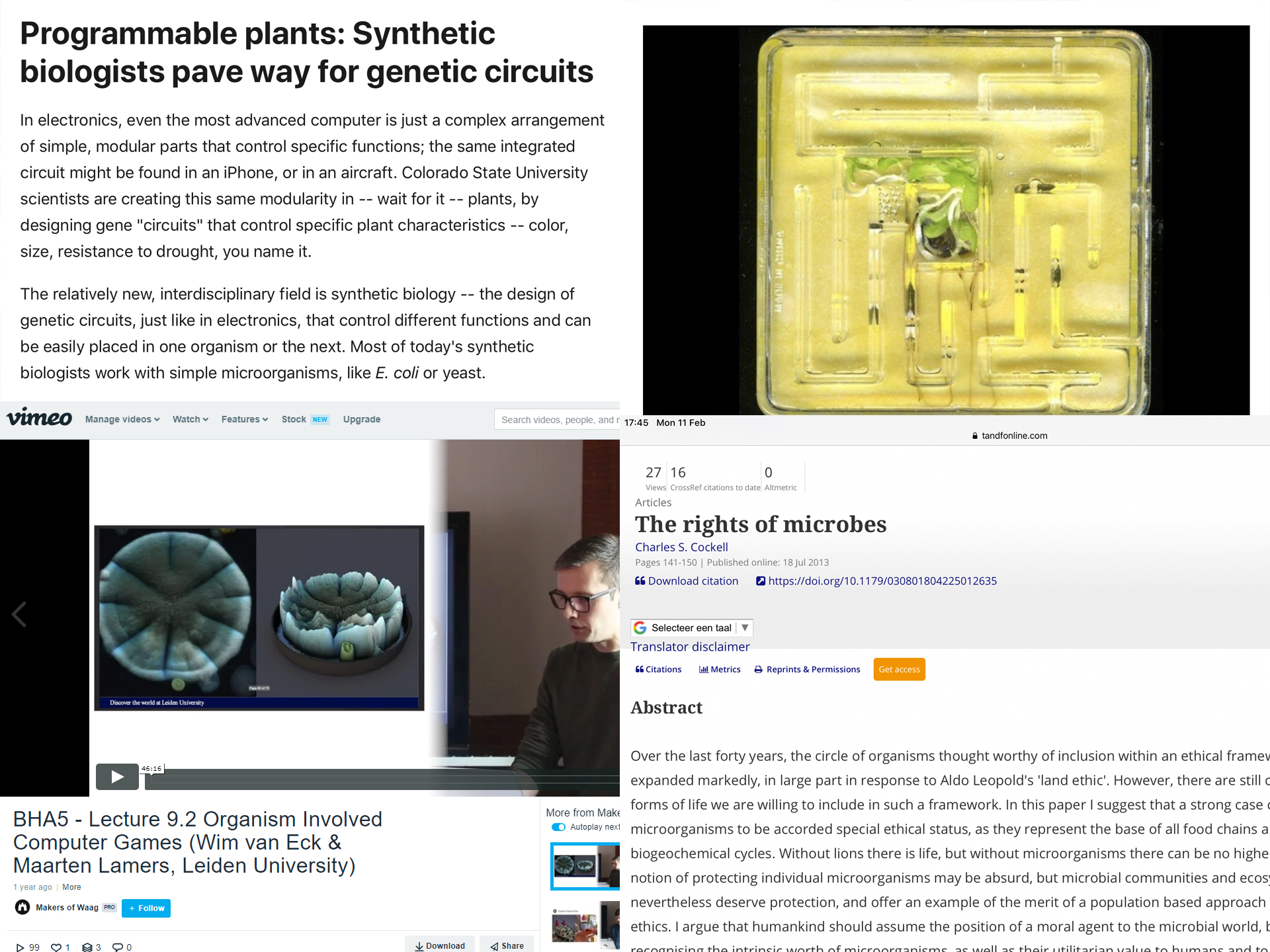
A whole new world is opening up for me!
Week 2
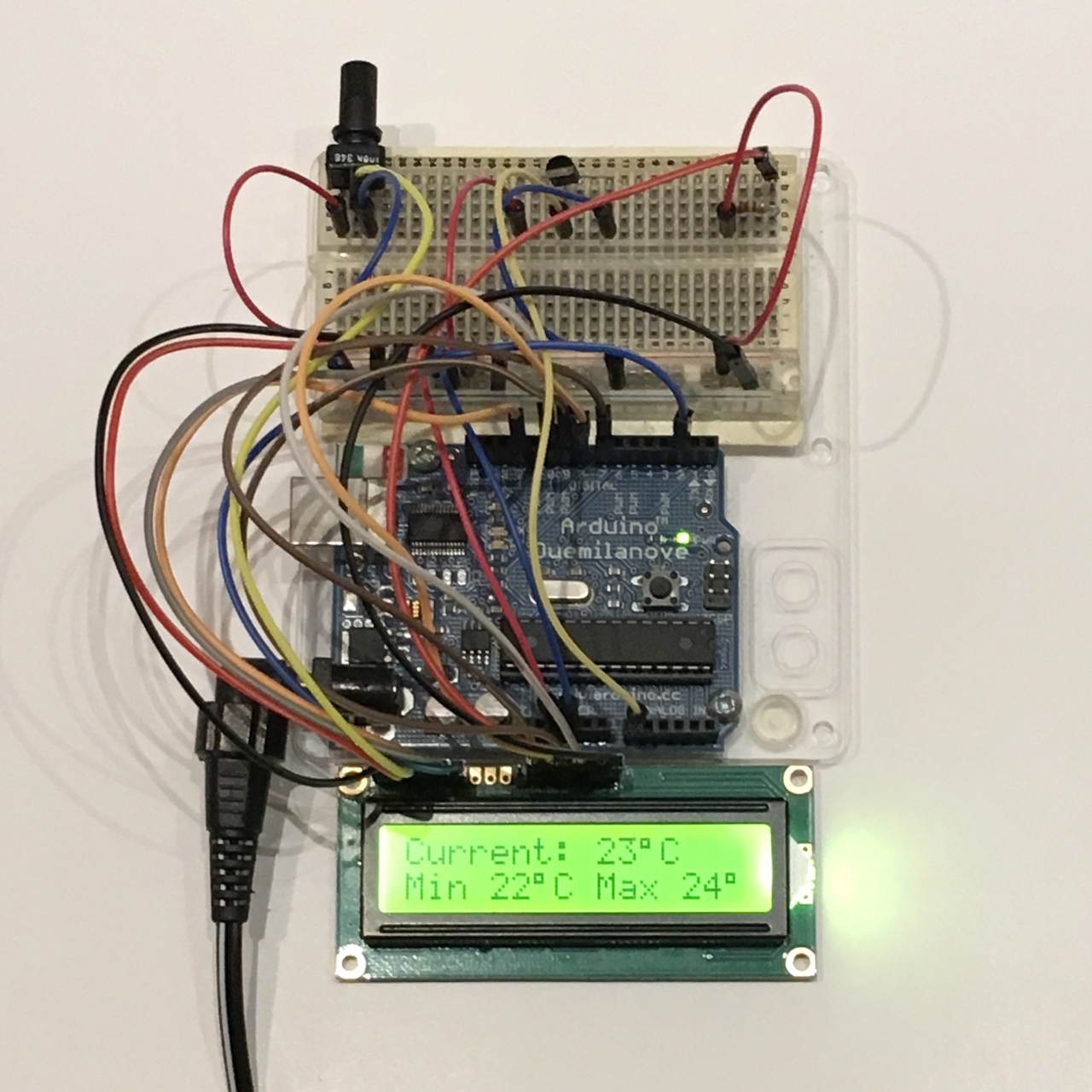
This week we got an introduction on microbiology and analog electronics. The assignment for electronics was to make a circuit with input and output. For this I revived an Arduino-device I designed for my Non-Scientific Arctic Weather Station in Ísafjörður, Iceland (2017): a MIN-MAX thermometer including an LCD display.
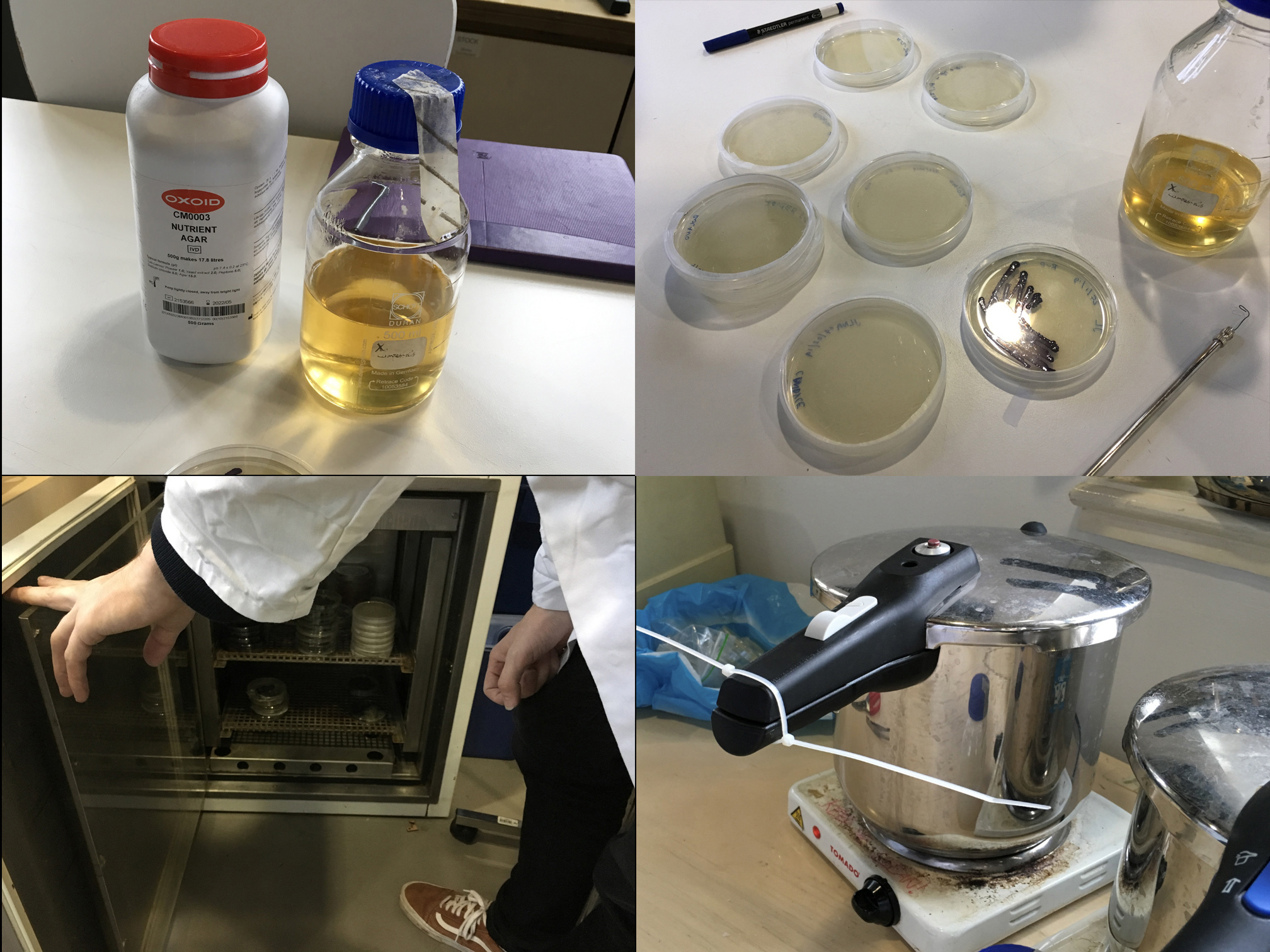
In the lab we got an introduction on cultivating microbes. We learned about (a) nutrient agar and (b) agar plates, and about (c) incubators and (d) autoclaves, aka Ikea pressure cookers.
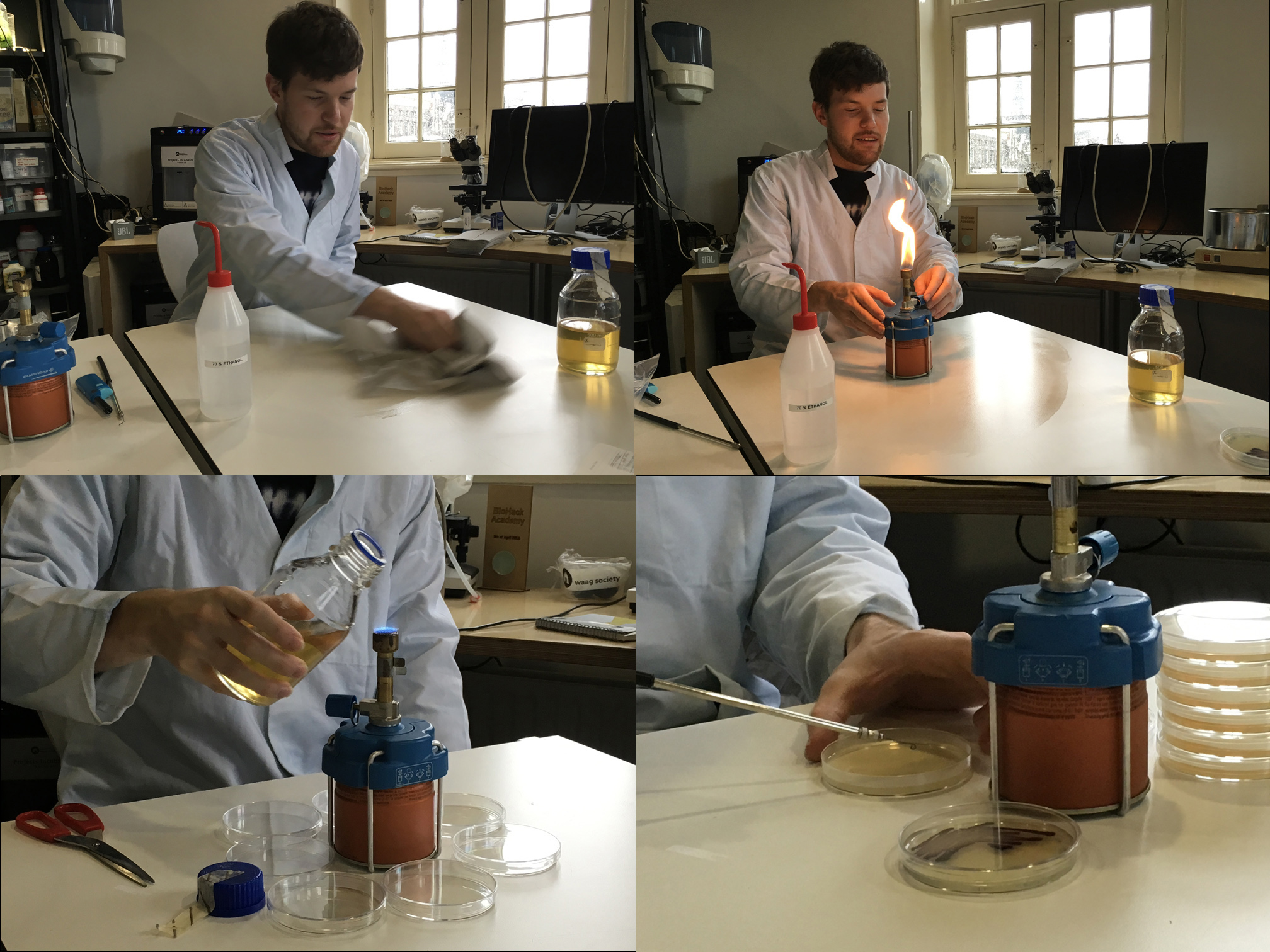
For cultivating microbes working sterile to avoid contamination is very important: (a) use alcohol to clean the surface and (b) a gas burner to create a sterile umbrella and for next steps: (c) sterilize whatever you use and (d) stay within the sterile “umbrella”.
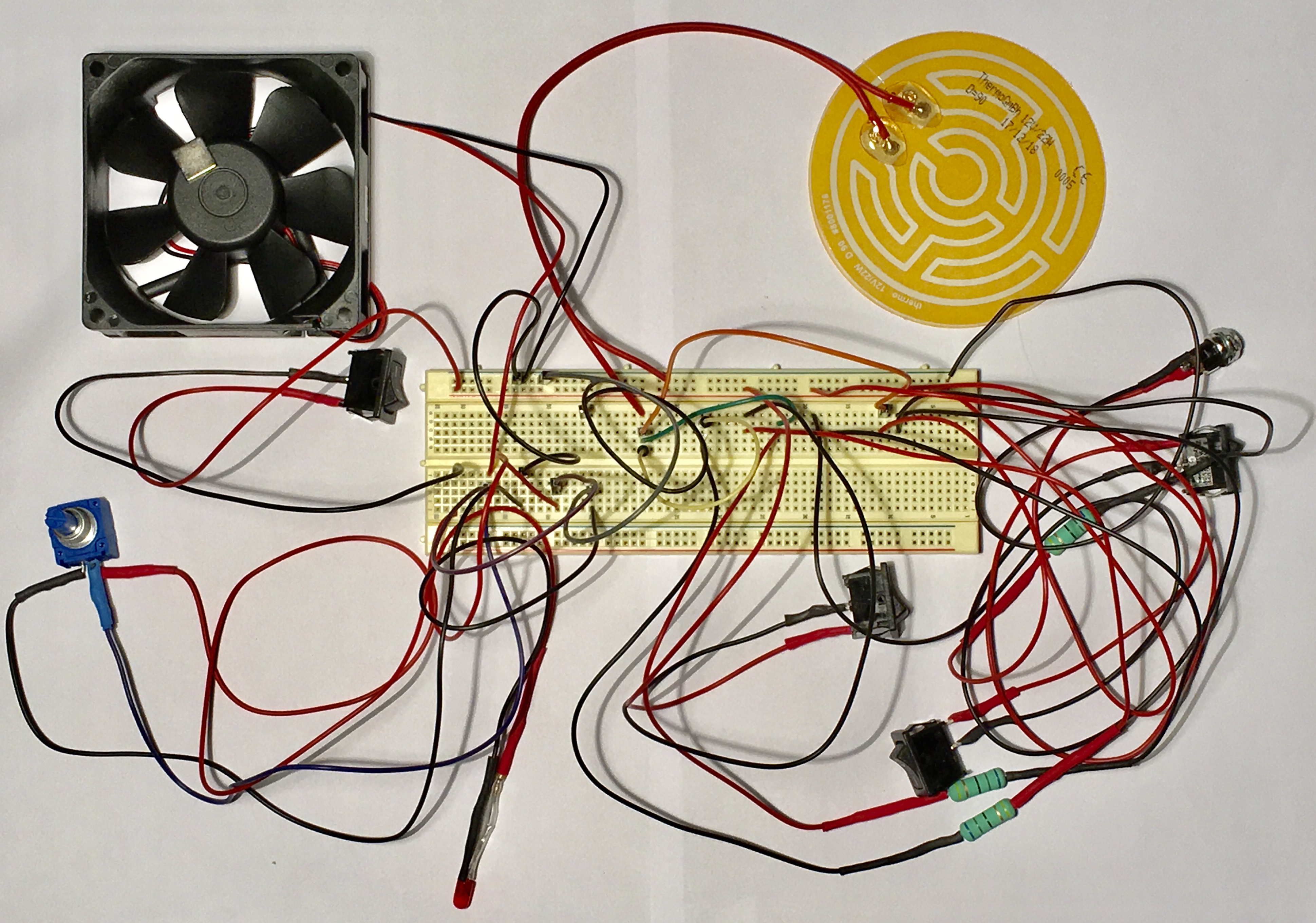
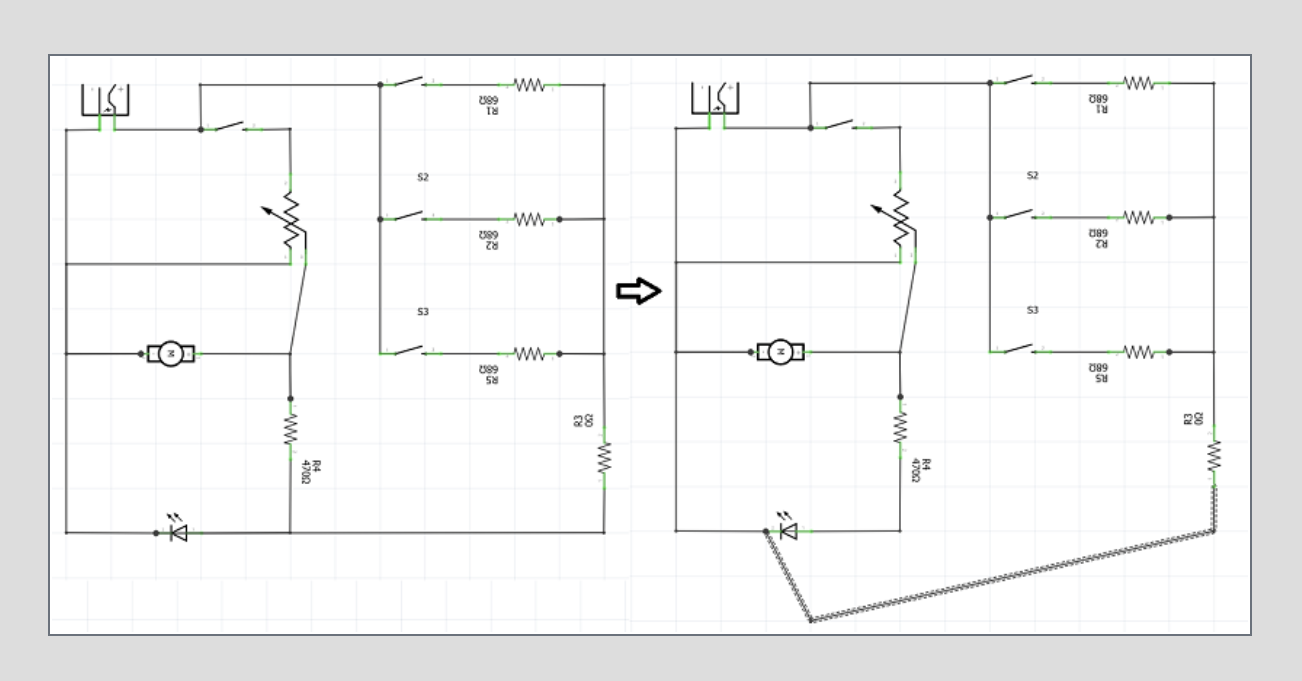
Week 1

Each week we will build a device to use in a DIY lab. This week we built our first lab device: a sterile hood. Again: quite a challenge, in particular because Ikea changed the design of the extractor fan we used as a primary filter!

In the lab we learned the basics of working sterile using alcohol to clean the working surface and a gas burner to create a sterile ”umbrella”.
We also got an introduction to laser cutting, this week’s practical assignment being the design and fabrication of a laser cut tube rack. I designed a parametric rack in Fusion 360, the parameters being the number of rows, number of columns and the tube size per row.
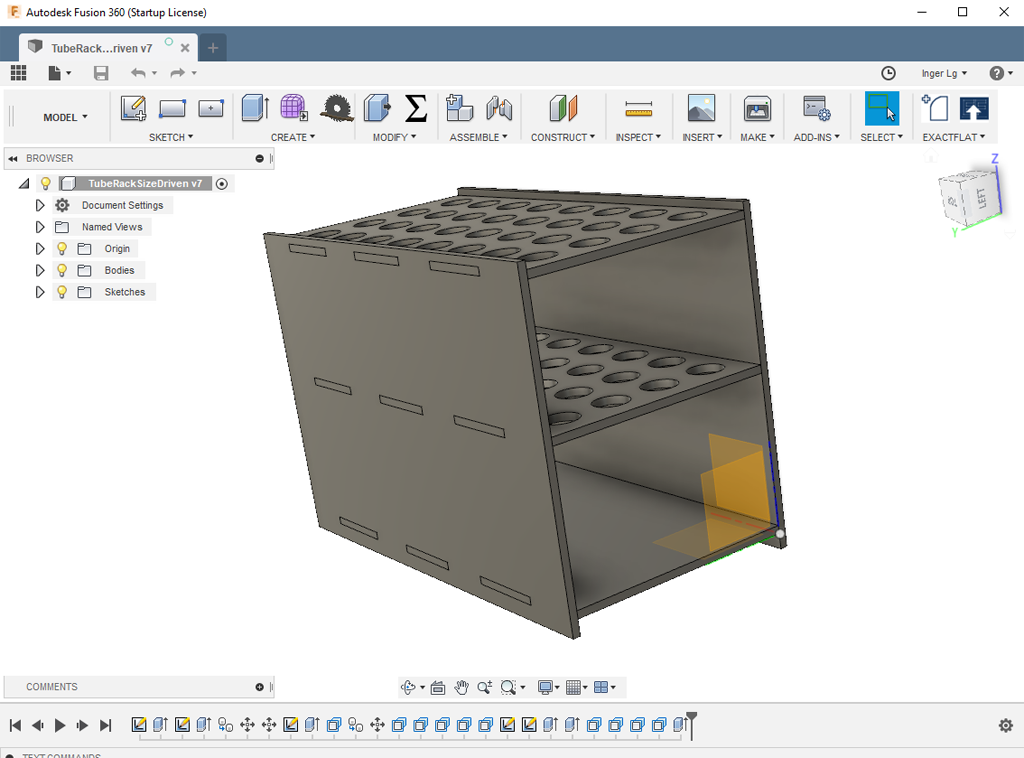
Biohack Academy 2019: My first blog post ever
I feel really blessed to have the opportunity to be part of the 6th Biohack Academy that will take place in the next 10 weeks in this beautiful building in Amsterdam:
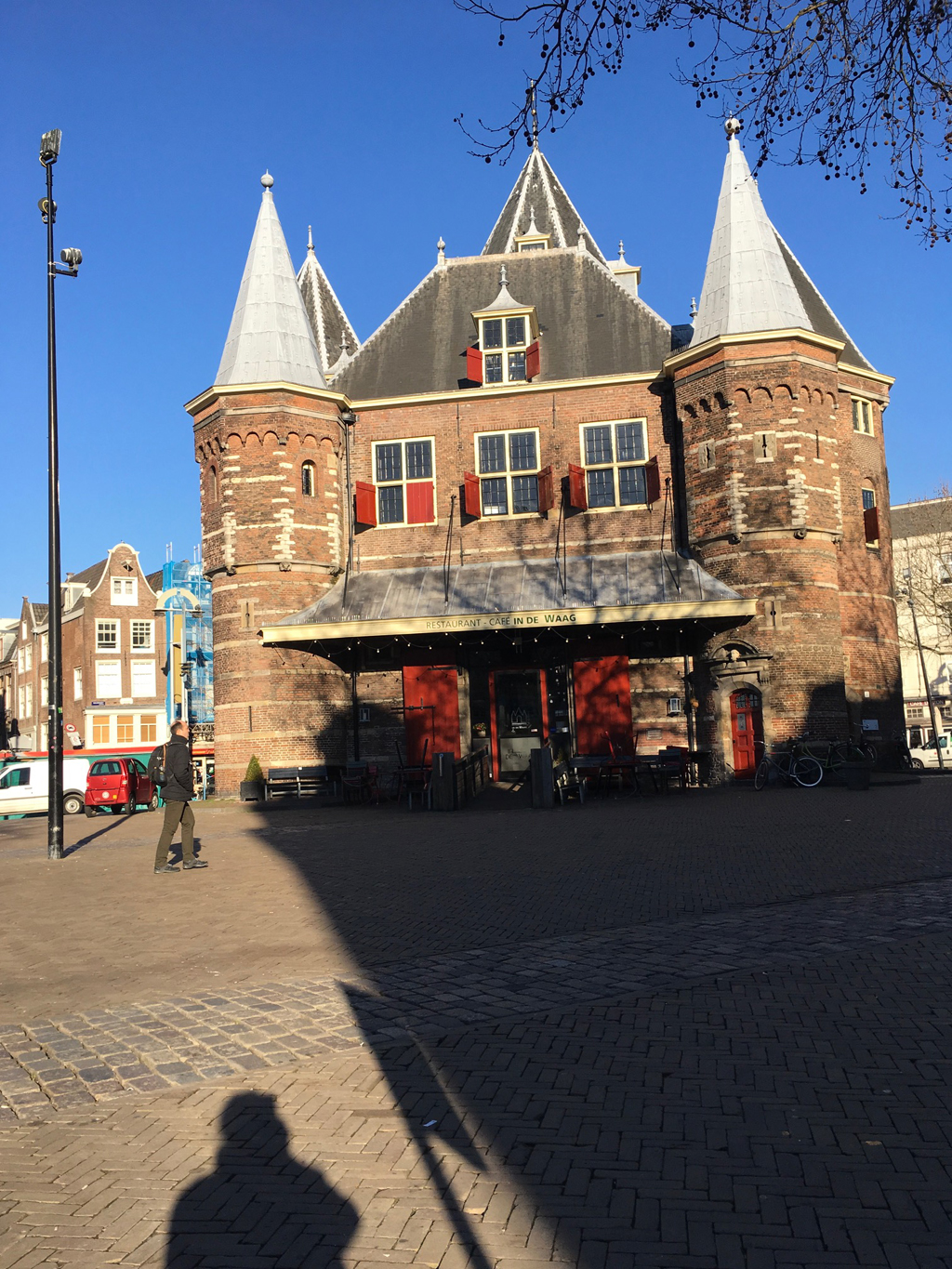
In this blog I will document what I learn and discover as a newbie biohacker. To start with: I will have to learn how to resize and rotate a picture in this blog!

